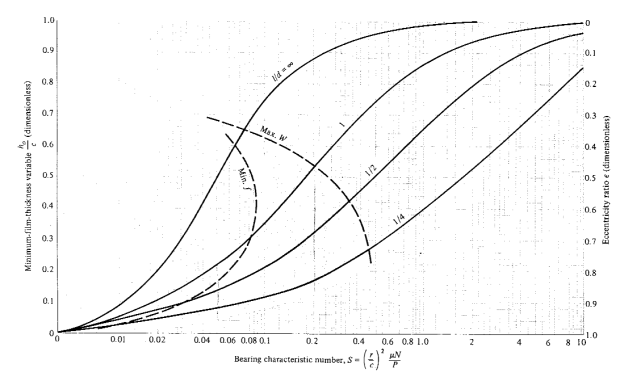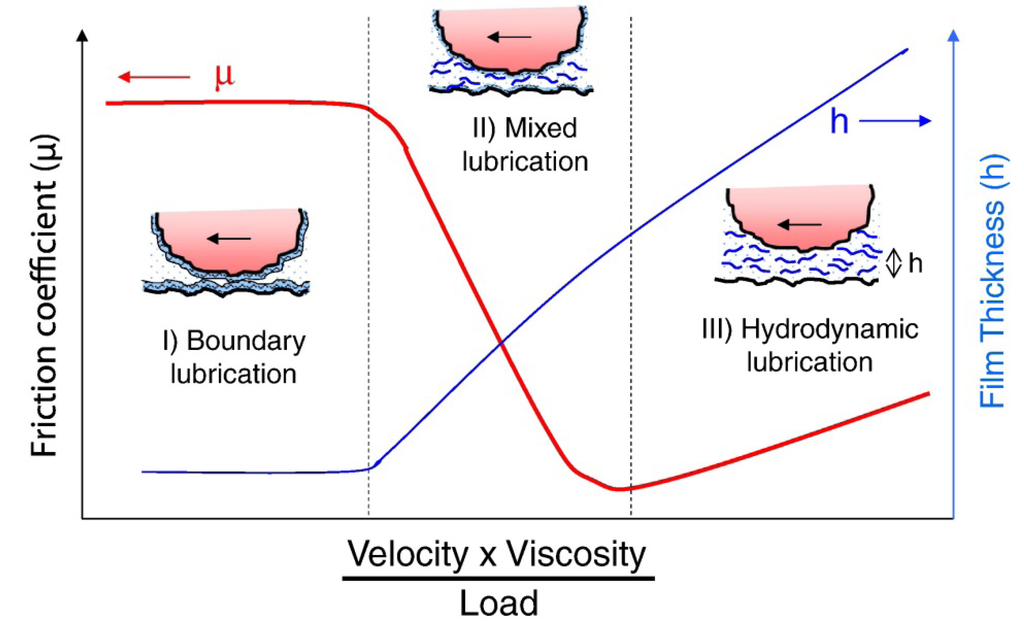Originally Posted By: turtlevette
Originally Posted By: Shannow
The oil film thickness is massive compared to the length of the lubricant molecules.
That does not mean that a special molecule could not provide the same film thickness at a lower viscosity.
You disagree with that? The study you posted seems to elude to that. But they eliminated the tests because it did not fit their frame of reference.
What purpose does making up nonsensical arguments have in this discussion.
Film thickness is controlled by viscosity...more viscosity more film thickness.
Your statement that a special molecule could have lower viscosity and higher film thickness means that it simultaneously has both lower AND higher viscosity...nonsense.
l/d is the length on diameter of the bearing...IC engines are somewhere between the 1/4 and 1/2, but for the sake of discussion, just use the 1/4 line.
Sommerfeld number is the bottom line, and using your noggin, you can see that making the Sommerfeld Number bigger makes the oil film bigger.
Things on the numerator side that make oil film bigger are, in order that you come across them in the formula:
* radius - more shaft diameter, more film thickness;
* viscosity - more viscosity, more film thickness
* Speed - more RPM, more film thickness.
On the denominator side (make these smaller to make Sommerfeld number bigger)
* radial clearance (smaller radial clearances, more film thickness)
* Applied pressure (smaller loads, more film thickness).
So a thin lubricant, e.g. for formula 1 use (tight clearances, very high RPM) is of zero suitability for a diesel with high BMEP, and low RPM potential.
Stribeck curve uses the last portion of Sommerfeld to demonstrate hydrodynamic, mixed, and boundary regimes.
Note...more viscosity, more likely to be hydrodynamic. More speed, more likely to be hydrodynamic. Less load, more likely to be hydrodynamic.
Note that designers are increasingly allowing MOFT to fall into the contact zone, and are using friction modifiers to prevent failure, and lower friction.
These additives are NOT increasing the film thickness







